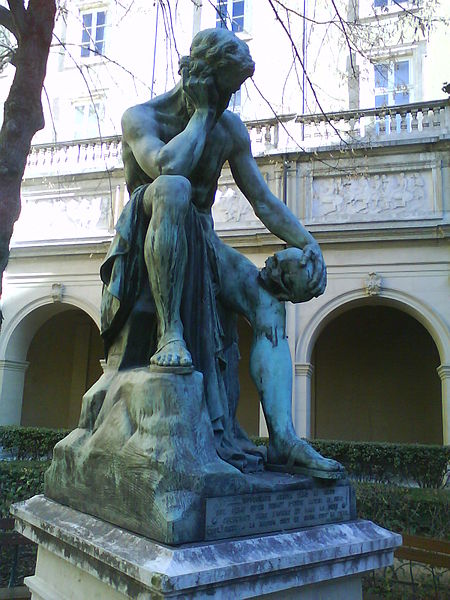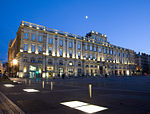Democritus meditating on the seat of the soul
1868 sculpturesBronze sculptures in FranceFrench building and structure stubsSculpture stubsSculptures of the Museum of Fine Arts of Lyon ... and 2 more
Skulls in artStatues in France

Democritus meditating on the seat of the soul (Démocrite méditant sur le siège de l'âme) is a statue by Léon-Alexandre Delhomme (1841–1895), exhibited at the Paris Salon of 1868. It shows the Greek philosopher Democritus, his eyes fixed on a skull he holds in his hands. It is now exhibited in the garden of the Musée des Beaux-Arts de Lyon. On its base is inscribed an extract from the 29th fable of La Fontaine: "Hippocrates in time arrived at the conclusion that he had not sought whether the heart or the head was the seat of either reason or sense in man and beast"
Excerpt from the Wikipedia article Democritus meditating on the seat of the soul (License: CC BY-SA 3.0, Authors, Images).Democritus meditating on the seat of the soul
Place Meissonier, Lyon Terreaux
Geographical coordinates (GPS) Address Phone number Website Nearby Places Show on map
Geographical coordinates (GPS)
| Latitude | Longitude |
|---|---|
| N 45.766861111111 ° | E 4.8336666666667 ° |
Address
Musée des Beaux-Arts de Lyon
Place Meissonier
69001 Lyon, Terreaux
Auvergne-Rhône-Alpes, France
Open on Google Maps











